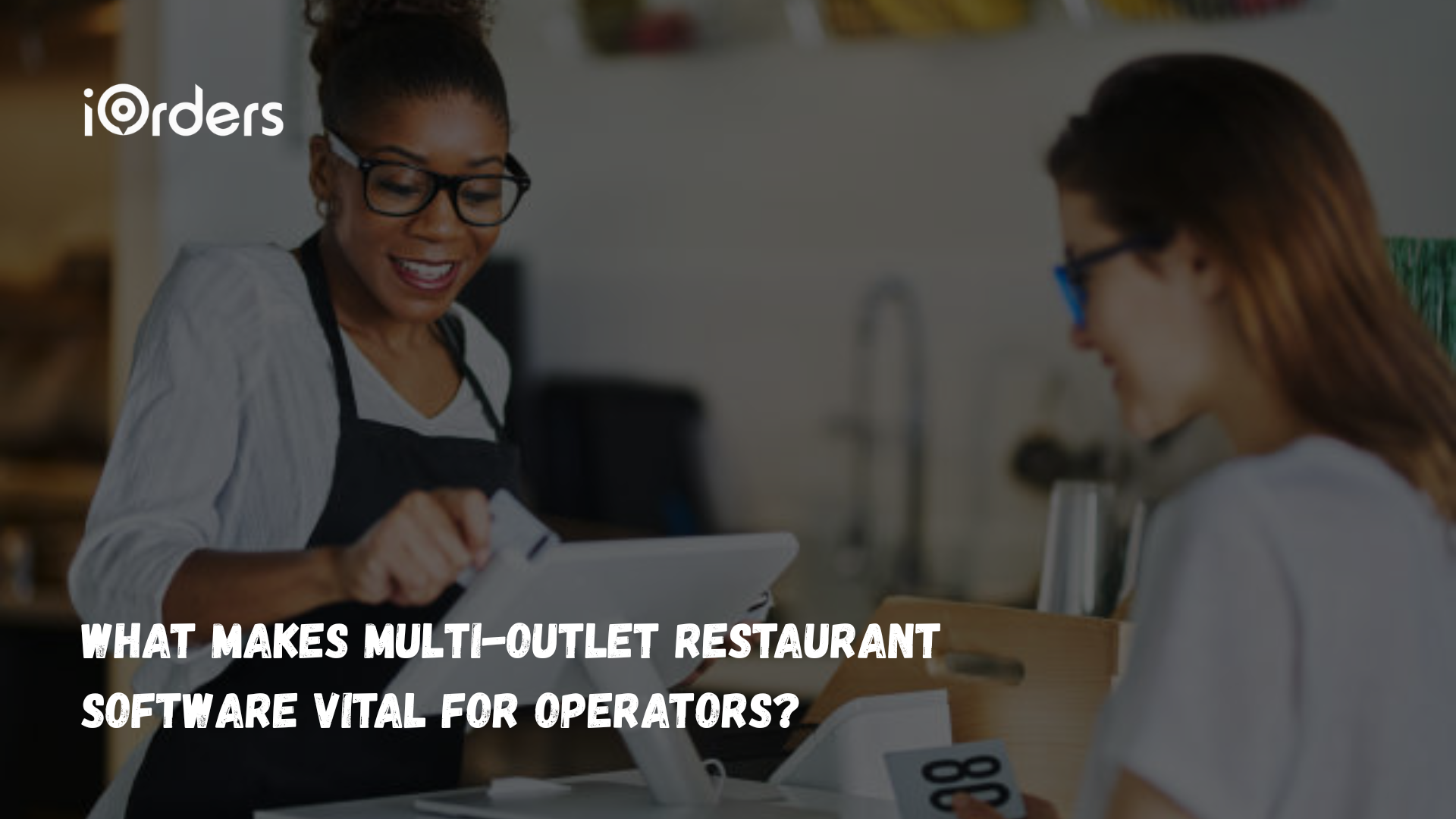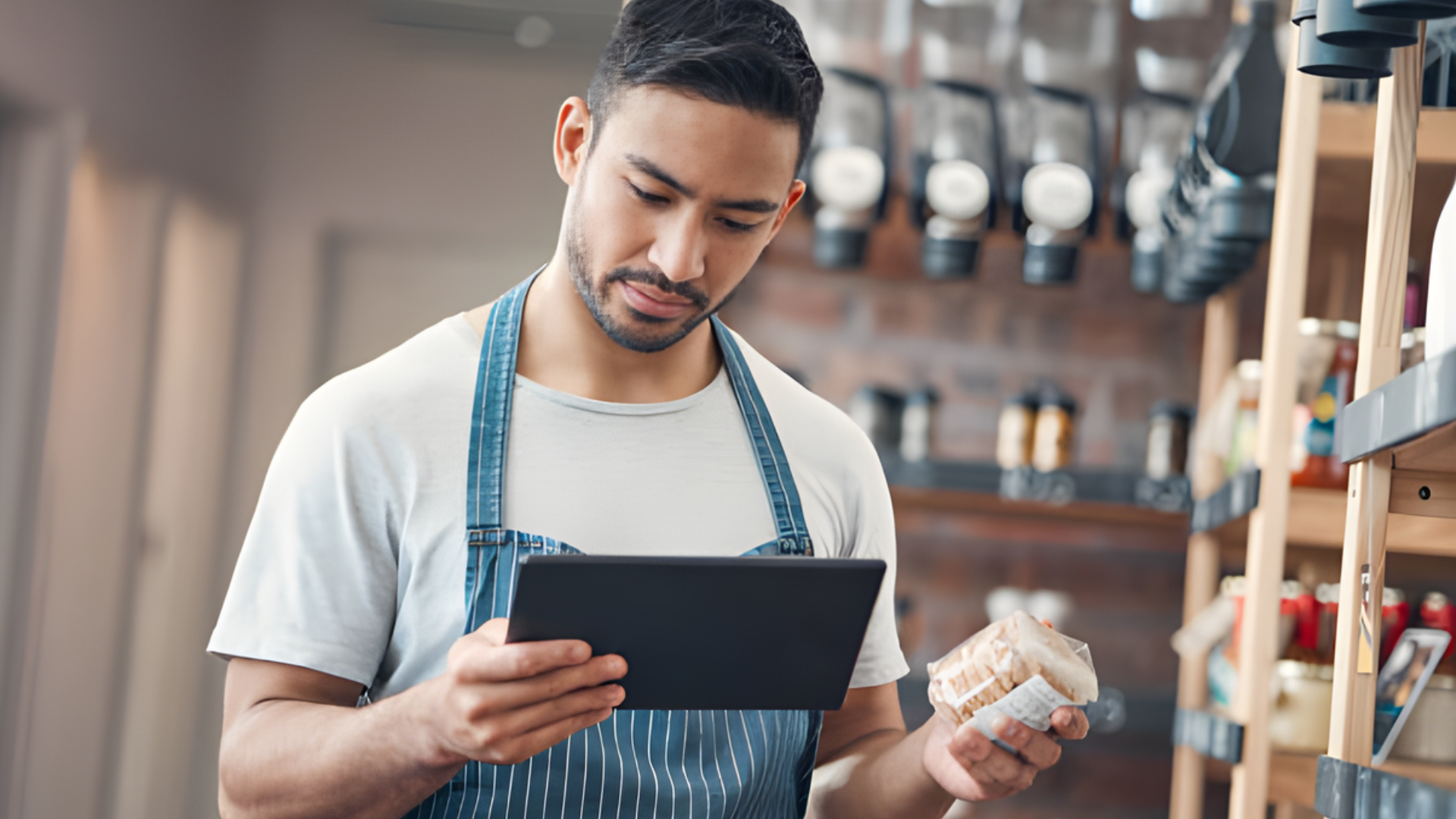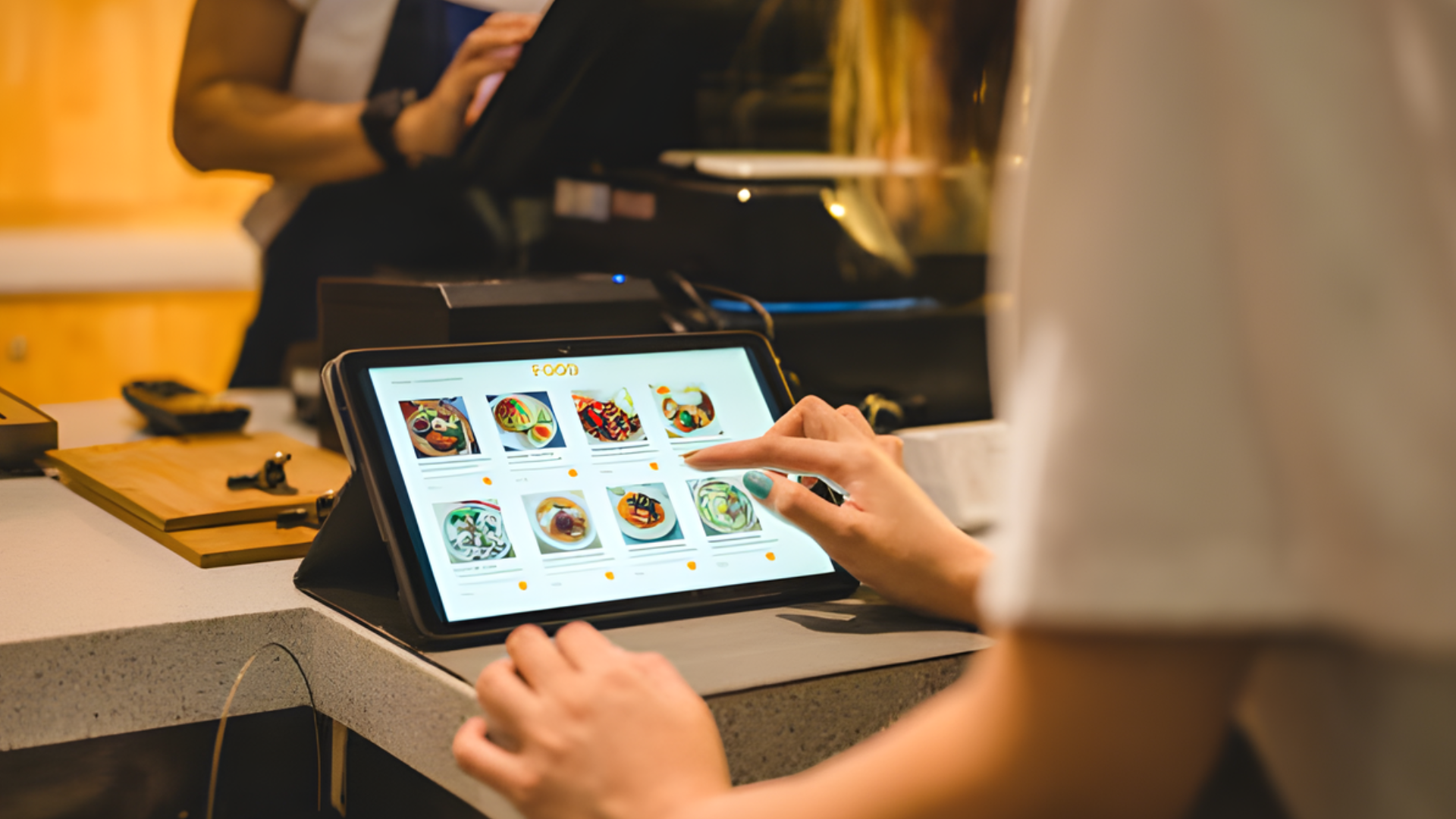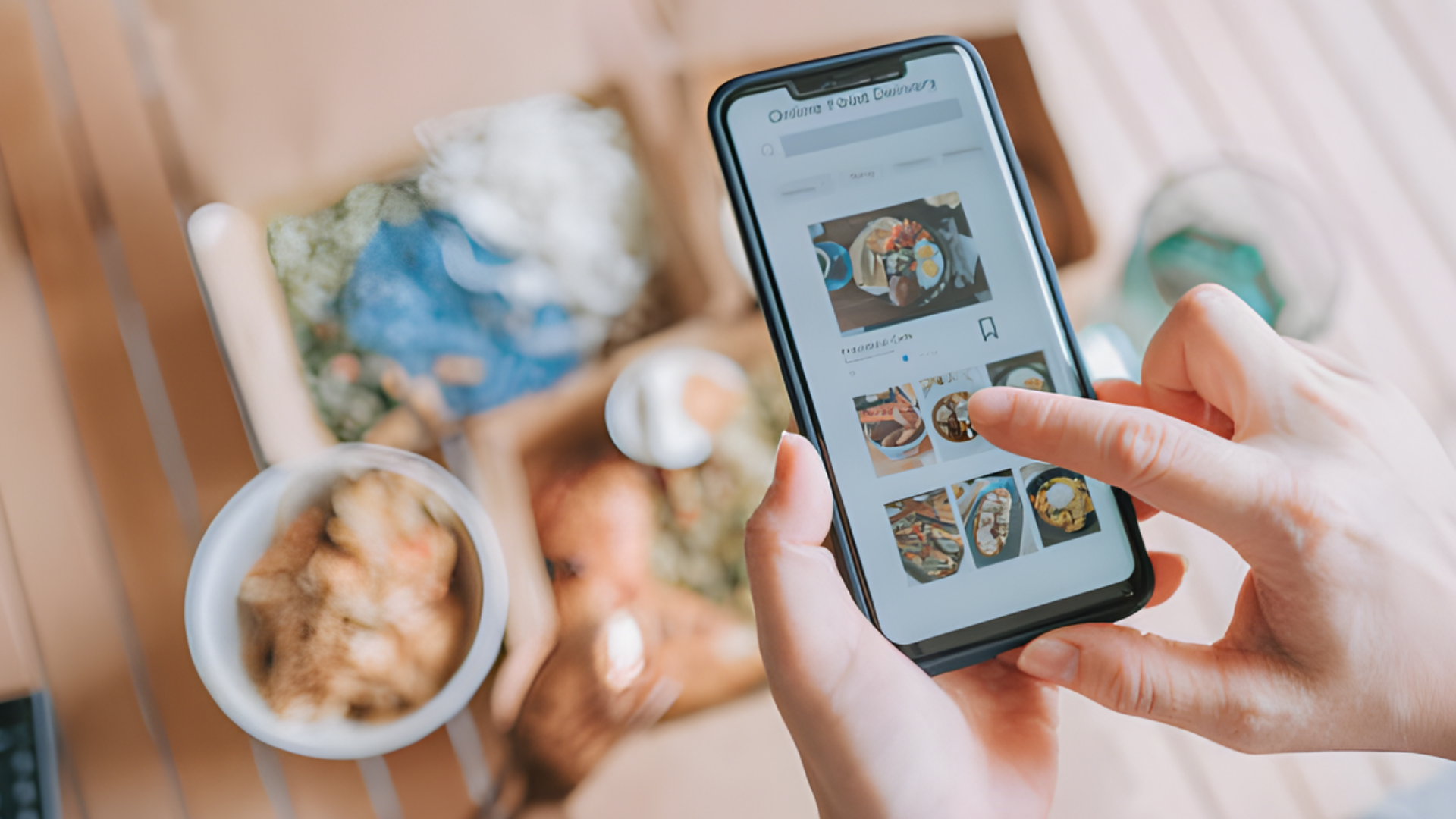November 19, 2025

Managing several restaurant outlets often feels like you’re working through a system that shifts the moment you think you understand it. Each location follows its own rhythm, its own peak hours, and its own set of small issues that grow when there is no central place to see how they connect.
Without that visibility, it becomes harder to track what is selling, where delays begin, and which outlets need immediate attention. The pressure increases when delivery orders rise and commissions quietly reduce margins that already vary from store to store.
This blog gives you a practical look at how multi-outlet restaurant software brings these moving parts into one dashboard. You will see the key elements that help steady daily operations, keep menus consistent, manage direct orders, understand customer patterns, and maintain healthier margins.
Multi-outlet restaurant software is a central control system that brings every location together in one place. It includes a POS layer for managing orders, menus, and inventory, but extends further with direct online ordering, delivery coordination, customer data, and outlet-wise insights. This gives operators one dashboard to run all their stores with consistent menus, steadier workflows, and clear visibility across locations.

Restaurant inventory software helps multi-outlet operators track stock levels, usage patterns, and demand signals across all locations in one place. It removes guesswork from replenishment and makes it easier to keep every outlet prepared during peak hours.
Did you know? The global restaurant management software market was valued at about 5.79 billion dollars in 2024 and is projected to grow at over 17.4% annually through 2030, driven by cloud systems that tie inventory, POS, and operations together.
To fully realize the benefits of restaurant inventory software, focus on the core features that drive success across multiple outlets. The right solution provides centralized data, automates tasks, and offers real-time insights to streamline operations.

Managing multiple locations gets easier when the software you use supports both your daily operations and your bottom line. A strong multi-outlet system should reduce scattered work, give you a clear view of each outlet, and help you make decisions that protect your margins across locations.
These core elements create a more stable way to run a growing restaurant brand without constant uncertainty.
A multi-outlet setup runs smoother when all core functions sit in one place. Centralized control helps operators keep every location aligned without jumping between tools.
Real-time reporting helps operators see patterns as they develop, not hours later. It brings clarity to outlet performance and supports decisions that protect margins.
For multi-outlet operators, stock issues rarely stay local. A shortage in one outlet can affect the brand everywhere if customers keep hearing “not available.” Inventory tracking with real-time signals helps you see problems early instead of reacting when it is already too late.
Guests expect the same experience from your brand, no matter which outlet they visit. Central control over menus and pricing helps you keep that promise while still allowing room for outlet-specific tweaks when needed.
iOrders' smart restaurant menu system and real-time menu management feature ensure that any menu changes, price updates, or special promotions are instantly reflected across all locations. This eliminates discrepancies between outlets, and hence, no delays and no outdated information.
For multi-outlet operators, managing data across locations can be overwhelming without clear reporting. A comprehensive restaurant data analytics system pulls together key metrics from all outlets in one place, so you can see trends, track performance, and make informed decisions.
The success of a multi-outlet restaurant brand depends heavily on the customer experience. The use of AI ordering systems can take this a step further by personalizing the customer experience, reducing order errors, and optimizing the ordering flow. Software that integrates customer data and ordering history increases the guest experience and builds long-term relationships.
As your restaurant expands across multiple outlets, not everyone needs access to everything. A controlled access system helps you give the right permissions to the right people, which keeps operations organized and reduces unnecessary mistakes.
Multi-outlet operators rarely stay in one place. Remote access lets you review performance, check orders, and support locations without needing to be physically present at each outlet.
Even with strong internal operations, how customers place orders still shapes your margins. Third-party platforms give you reach, but they also take a cut that grows with each location you add. For multi-outlet brands, the cost of relying on these platforms compounds quickly, which makes direct ordering through a single dashboard more than just a feature.

Multi-outlet brands face the challenge of high commissions, brand dilution, and customer data loss when relying on third-party marketplaces. By shifting to iOrders, restaurants regain control over their brand, their customer relationships, and their margins. Direct ordering eliminates unnecessary commission costs, giving operators the opportunity to scale profitably as they grow across multiple locations.
Managing multiple restaurant locations can be complex, but with the right multi-outlet software, operators can streamline operations, ensure menu consistency, and gain real-time insights across all outlets.
From centralized operations control and inventory tracking to real-time sales reporting and AI-driven customer insights, iOrders provides a unified platform that reduces costs, enhances customer experiences, and improves profitability.
By shifting to direct online ordering, operators save on third-party commissions, retain valuable customer data, and strengthen brand continuity. Book a demo now to see how iOrders can transform your multi-outlet operations.
1. What is the 30-30-30 rule for restaurants?
The 30-30-30 rule in restaurants refers to allocating 30% of your budget to food costs, 30% to labor costs, and the remaining 30% to other expenses like rent, utilities, and marketing. This helps maintain financial balance and profitability.
2. What are the three C's in a restaurant?
The three C’s in a restaurant are Customers, Cost, and Consistency. Focusing on these helps maintain a positive customer experience, control operating expenses, and ensure uniform quality across all outlets.
3. How to manage multiple restaurant locations?
Managing multiple restaurant locations requires centralized software for tracking orders, inventory, and performance across outlets. Implementing standardized processes and clear communication ensures smoother operations and consistency at every location.
4. What does 87 mean in a restaurant?
"87" in a restaurant refers to a menu item that is out of stock or unavailable. It is commonly used in the kitchen or front-of-house to communicate quickly that a dish cannot be served.
5. What is the full form of NPI in restaurants?
NPI stands for New Product Introduction. It refers to the process of adding new menu items or products to a restaurant’s offerings, often accompanied by a marketing strategy to drive customer interest.